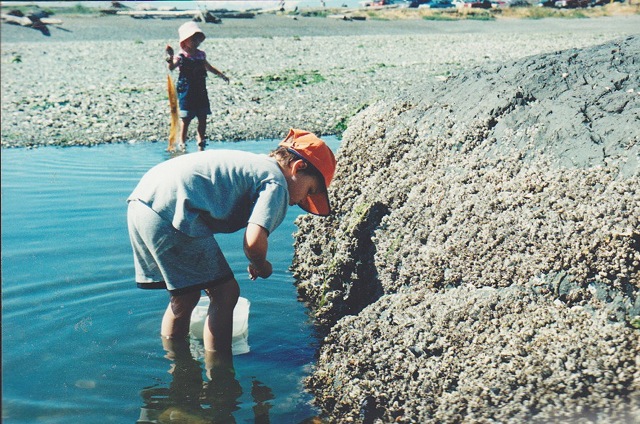What do I teach about tidal pools?
Tidal pools form as the tide comes in and traps ocean water, plants and animals in crevices in the rocks or beach. Twice a day when the tide goes out and then in, pools of sea water are left in the rocky pockets along the shore. Tidal pools can be small, shallow puddles found high up on the shore or huge, deep pools nearer the sea.
The animals and plants in the tide pools depend on the tides every day to bring them fresh oxygen and food. If you live by the ocean, tide pools make a great choice for teaching environmental education.
Tide pool zones
When teaching young children about tidal pools, keep the information fairly simple. There are basically two tidal pool zones, high tide and low tide and different animals and plants live in each zone.
The high tide zone
This zone is flooded for hours during each high tide. Animals who live in this zone must be tough enough to survive waves, currents, and the hot sun shining on them for parts of the day. Sea anemones, sea stars, chitons, crabs, algae, and mussels live in the high tide zone. This is the safest zone to take children during a tide pool field trip as the tide pools are well away from the ocean’s edge. Everything you need to know about a tidepool field trips here…
The low tide zone
The low tide zone is under water most of the time. It’s only exposed to the sun during low tide. Tidal pools in this zone have more organisms living in them and the organisms are not as resistant to dryness and temperature changes as the high tide organisms. Animals such as abalone, anemones, chitons, crabs, limpets, mussels, sea cucumbers, sea stars, sea urchins, snails and whelks live in the low tide zone.
The tide pool in the image above was quite a distance from the ocean’s edge, yet we found many of the creatures from both zones in the pools.
